Q
how to connect bluetooth to proton saga
To connect Bluetooth in a Proton Saga, first make sure the vehicle is powered on (either with the engine running or key turned to ACC). Then fire up the infotainment system on the center console, head to the main menu, find "Bluetooth Settings," and switch on the Bluetooth function. Next, grab your phone, search for available devices, and select "Proton Saga" to pair. The passcode is usually "0000" or "1234" – once you confirm that, you’re good to stream music or take calls.
If you run into connection hiccups, try restarting the head unit or deleting old pairing records and starting fresh. The Saga’s Bluetooth setup is pretty basic, but it gets the job done for daily calls and music. Just a heads-up: the Bluetooth version might be a bit dated, so you might hit compatibility issues with newer phones. If that happens, check if your phone has a "compatibility mode" in its Bluetooth settings – that could help. Also, Bluetooth stability can get wonky if there’s other electronic interference nearby, so try to stay clear of other wireless signals when pairing.
For fancier features like contact syncing or voice control, you’ll need to check the owner’s manual to see if the Saga actually supports that stuff. Most other car brands follow similar Bluetooth pairing steps, though some luxury models step it up with wireless CarPlay or Android Auto for a more seamless connection experience.
Special Disclaimer: This content is published by users and does not represent the views or position of PCauto.
Related Q&A
Q
How much does it cost to maintain a Proton Saga 2022?
Based on Proton Saga 2022's official maintenance guidelines and real-world conditions in the Malaysian market, the annual upkeep costs for this car typically range from RM800 to RM1,200, though this figure can vary significantly depending on your annual mileage and the specific services required. Of course, this depends heavily on your mileage and the specific services you opt for. For regular servicing – think oil changes, oil filter replacements, and the basics – you're looking at around RM200 to RM300 per session. When it comes time for a major service, which might involve changing brake fluid, transmission oil, and other key components, expect to shell out between RM500 and RM800.
Being a homegrown Malaysian brand, Proton Saga benefits from relatively affordable零部件 prices and an extensive network of service centers, which definitely helps keep long-term ownership costs in check. Sticking to regular maintenance isn't just about prolonging your car's lifespan; it's crucial for keeping you safe on the road too. We always recommend following the maintenance manual to the letter and choosing authorized Proton service centers – that way, you're guaranteed genuine parts and professional expertise under the hood. And if you're watching your wallet, keep an eye out for Proton's occasional service promotions; they can help you trim those costs even further.
Q
What is the warranty on the 2022 Proton Saga?
The 2022 Proton Saga comes with a solid 5-year or 150,000 km factory warranty (whichever comes first), covering key components like the engine and transmission. The anti-rust warranty stretches to 7 years with unlimited mileage. This warranty package is pretty competitive in Malaysia's compact car segment and should help keep long-term ownership costs in check for drivers.
Important to note though – to keep that warranty valid, you've gotta stick to regular servicing at authorized Proton service centers. Skipping that could void your coverage, so make sure you hold onto all those service records, folks. On top of that, Proton throws in 24-hour roadside assistance for extra peace of mind when you're out and about.
Malaysia's hot and rainy weather can really test a car's durability, so going for a model with a lengthy warranty just makes smart sense. Other local players like Perodua also offer similar long-haul warranty deals, so it's worth shopping around before making your final decision.
Q
What is the resale value of a Proton Saga?
The Proton Saga, one of Malaysia's most beloved budget-friendly sedans, sees its used car value fluctuate pretty noticeably based on the model year, mileage, condition, and market demand. Industry data shows that a 3-year-old Saga typically retains around 50-60% of its original price, and even at 5 years old, it's still holding steady at roughly 40%. That actually outperforms some competitors in its class, thanks to its low maintenance costs, widespread after-sales network, and solid market reputation.
Something to keep in mind: top-spec trims like the Premium S, with their extra features, usually hold 5-8% more value than the base models. And a Saga with a complete, regular service history? That can fetch a 10% premium when you resell. If you're looking to boost your car's resale value, it's smart to hang onto those service records from when it was under the factory warranty and steer clear of major modifications that mess with the original specs.
Also, the Saga's 1.3L engine paired with that tried-and-tested gearbox delivers reliable fuel efficiency – a big checkmark for used car buyers. Malaysia's second-hand car market keeps steady demand for practical, economical rides like the Saga, especially among first-time car owners. So, price it right, and your used Saga should move pretty quick.
Q
Is the 2022 Proton Saga a good first car?
The 2022 Proton Saga makes total sense as a first car. It's got a solid rep in Malaysia for being a great value workhorse – easy on the wallet to buy, even easier to keep running, which is perfect if you're a first-time buyer watching your budget. Under the hood, you've got a 1.3L naturally aspirated engine. Now, it's no rocket ship, but trust me, it's more than enough for zipping around town on your daily commute.
Space-wise, for a small sedan, it's surprisingly roomy. You can squeeze five adults in there without too much hassle, and the boot? A decent 420 liters – plenty for family errands or a weekend getaway. Safety kit? It's got the basics covered: ABS, EBD, and dual airbags. Nothing flashy, but exactly what you'd expect in this price bracket.
One thing that really works for the Saga is Proton's service network. They're all over the country, so getting it serviced or fixed is a breeze. Parts are easy to come by and won't break the bank, which is a big plus when you're just starting out.
Driving it? Super laid-back. The steering is light, the size is just right – not too big, not too small – so navigating tight city streets and squeezing into parking spots is a cinch, even for new drivers. I also dig that they've kept the traditional physical buttons. No messing around with finicky touchscreens for every little thing; you just reach out and press – simple and intuitive. That's a big win for folks who value functionality over fancy tech.
Now, if you're all about the latest gadgets, you might wanna look at something more upmarket. But as an entry-level family car, the 2022 Saga is a really down-to-earth choice. And hey, let's not forget Malaysia's weather – hot and humid with those monsoon downpours. Proton's tweaked the air-con to blow nice and cold, and the body's rust-proofed to handle the elements. It's like they built it specifically for our local conditions. Can't argue with that.
Q
Does the 2022 Proton Saga have push-to-start?
The 2022 Proton Saga doesn't come with push-to-start ignition; this entry-level sedan sticks with the traditional keyed system. The focus here is on practical features instead, like the standard 7-inch touchscreen, Bluetooth connectivity, and reverse camera. For Malaysian buyers, push-to-start is usually reserved for higher-spec models or B-segment and above – you'll find it on the Proton X50 or X70, for example, where it adds that extra layer of convenience.
Sure, it misses out on keyless entry, but the Saga still holds its ground as one of the country's best-selling national cars thanks to its wallet-friendly price tag, impressive fuel economy (5.6L/100km), and Proton's solid after-sales network. If push-to-start is a must-have for you, third-party kits are available, but keep in mind this might affect your factory warranty. Your safest bet? Go through a Proton authorized service center for the retrofit.
Truth be told, in Malaysia's hot and humid climate, a good old mechanical key can be more reliable. That's probably why plenty of budget-friendly cars still stick with this tried-and-tested setup.
Q
How does the 2022 Proton Saga compare to the Perodua Bezza?
Malaysia's favorite B-segment sedans for 2022, the Proton Saga and Perodua Bezza, each bring their own strengths to the table. The Saga packs a 1.3L four-cylinder engine churning out 95PS, paired with a 4AT gearbox. It delivers smooth power delivery and a comfort-tuned chassis, making it a solid family hauler. ABS and dual airbags come standard across the range, with the higher trims adding stability control. The interior leans into practicality, and space-wise, it has the Bezza beat.
On the flip side, the Bezza offers a choice of 1.0L and 1.3L engines. ISOFIX child seat anchors are standard across all variants, and the top-spec model gets the ASA 3.0 driver assistance suite, giving it an edge in tech. However, rear passenger space can feel a bit tight.
Both models tick the boxes for Malaysian buyers looking for economy and practicality. The Saga wins on value-for-money and interior room, while the Bezza shines brighter when it comes to fuel efficiency and active safety tech. It's worth noting both have scored a 4-star ASEAN NCAP safety rating, so you're covered on that front. Ultimately, the choice boils down to your priorities and budget. If you want a bit more engagement behind the wheel, take the Saga for a spin. But if low running costs are your main focus, the Bezza is the way to go.
Q
Is the 2022 Proton Saga comfortable for long drives?
The 2022 Proton Saga, as the entry-level sedan from Malaysia's homegrown brand, delivers a solid but unremarkable performance when it comes to long-distance driving comfort. The seats, featuring ergonomic design with decent lumbar support, handle those typical 4-5 hour interstate drives around Malaysia just fine. However, the rather firm suspension setup does take a slight toll on comfort when tackling bumpy roads. In terms of noise insulation, tire roar becomes noticeable once you exceed 110km/h, but it's still within the acceptable range for its class. For buyers who frequently hit the highway, I'd recommend springing for the higher-spec leather seat variant to up the comfort ante. Also, regular wheel alignments and tire maintenance can really help cut down on long-drive fatigue. If you're dead set on a better long-distance experience within a similar price bracket, you might want to stretch your budget for a B-segment sedan. That said, the Saga still holds its own with strong fuel efficiency and low maintenance costs – its official 5.6L/100km fuel consumption figure is definitely a draw for folks regularly cruising the North-South Expressway.
Q
Does the 2022 Proton Saga support Apple CarPlay and Android Auto?
The 2022 Proton Saga, a key entry-level model from Malaysia's national car brand, does come with a 7-inch touchscreen infotainment system supporting Apple CarPlay and Android Auto in its 1.3L Premium variant. This feature uses a wired USB connection for smartphone mirroring, allowing drivers to safely access common apps like navigation and music on the go. It's worth noting that the base 1.3L Standard trim misses out on this – something shoppers should keep in mind when balancing budget and needs.
Given Malaysia's hot and rainy climate, the Saga's infotainment screen holds up well against glare, and the system's responsiveness has been tuned for local road conditions. A quick tip though: regular cleaning of the USB port is a good idea to prevent connection issues down the line.
Looking at rivals, the 2022 Perodua Bezza only offered similar phone connectivity in its higher-spec trims. Meanwhile, Proton's decision to make reverse camera standard across the Saga range really highlights the brand's focus on practicality. These little differences are definitely worth considering when shopping for an affordable sedan in Malaysia.
Q
What is the horsepower of the 2022 Proton Saga?
Powering the 2022 Proton Saga is a 1.3-liter naturally aspirated four-cylinder engine, cranking out 95 PS and 120 Nm of torque. It pairs with either a 5-speed manual or 4-speed automatic gearbox. As the Malaysian brand's entry-level sedan, this car has won over plenty of family buyers with its wallet-friendly price tag and solid reliability. The horsepower figure might not blow you away, but it's more than enough for daily city drives. Plus, it's pretty fuel-efficient too – perfect if you're watching your budget.
Horsepower is definitely a key metric for engine performance, but real-world driving feel depends on a mix of factors: torque delivery, how well the gearbox works with the engine, and the car's weight. The Saga's tune leans into smoothness and fuel economy, which makes total sense for its position in the market. Even with Malaysia's hilly roads and hot weather, this small-displacement engine holds its own, providing enough oomph when you need it. And let's not forget the low maintenance costs – that's another big reason it stays a hit locally.
Q
What are the safety features in the 2022 Proton Saga?
The 2022 Proton Saga, Malaysia's beloved national car, doesn't skimp on safety, boasting an ASEAN NCAP 4-star rating. Across the range, you're getting dual airbags, ABS with EBD and BA as standard – the essentials you'd expect. Step up to the higher-spec variants, and you'll unlock the added reassurance of ESC (Electronic Stability Control) and TCS (Traction Control System), which do a solid job of keeping things composed when the roads get slippery.
Proton has built the Saga with a high-tensile steel body structure, and they've thrown in ISOFIX child seat anchors too, so it's got both passive safety and family practicality covered. It's worth noting the Saga uses a front-disc, rear-drum brake setup, but paired with some tire grip optimization, it delivers a well-rounded performance for a B-segment sedan.
If your budget stretches that far, I'd definitely recommend going for the version with ESC. It's a game-changer when it comes to reducing skidding risks, and let's be real, that's a big plus in Malaysia's often rainy weather. Competitors like the Perodua Bezza offer similar safety kit these days, so it really comes down to comparing specs and figuring out what best suits your needs.
Latest Q&A
Q
why battery light on in car
When that battery warning light pops up on your dashboard, it's usually a heads-up that something's off with the charging system. Could be the alternator isn't properly juicing up the battery, or maybe the battery itself is starting to kick the bucket. Here in Malaysia's hot and humid climate, batteries tend to have a shorter lifespan than they would in temperate regions, so you’ve got to stay on top of it. Common culprits include a loose or broken alternator belt, a faulty voltage regulator, corroded battery terminals, or sketchy wiring connections. It’s best to get it checked out ASAP—otherwise, you might end up with a car that won’t start when you need it most.
And let’s not forget the rain—Malaysia gets plenty of it, which means battery terminals are prone to oxidizing from all that moisture. A little regular maintenance goes a long way here: clean the terminals every so often and slap on some Vaseline to keep them in good shape and extend the battery’s life.
If the battery light starts flashing or if other warning lights join the party, you’re probably looking at a more complicated electrical issue. That’s when you’ll want to bring in a professional technician to diagnose it properly.
Day to day, you can get a rough idea of the battery’s condition by noticing if your headlights seem dimmer than usual or if the engine cranks sluggishly when you start the car. But for the most accurate check, grab a multimeter. When the car’s off, a healthy battery should read around 12.6 volts. Once the engine’s running, that number should jump to between 13.8 and 14.4 volts. If it’s lower than that, your charging system isn’t working like it should.
Q
why my car engine light is on
When your car's check engine light comes on, it usually means the vehicle's electronic control system has detected an issue. This could be caused by something as simple as a faulty oxygen sensor, worn spark plugs, a problematic ignition coil, abnormalities in the fuel system, issues with the exhaust system, or even a loose gas cap. It's advisable to use an OBD - II scanner to read the trouble codes as soon as possible to pinpoint the exact problem, ignoring it for too long might lead to more serious damage down the line.
Here in Malaysia, the hot and humid weather can speed up circuit aging or cause sensors to get damp, so regular circuit checks and keeping the engine bay clean are especially important. If the check engine light starts flashing or is accompanied by noticeable abnormalities like loss of power or strange noises, stop the vehicle immediately and contact a repair shop. This could indicate serious issues such as engine knocking or a damaged catalytic converter.
During regular maintenance, make sure to use engine oil and fuel that meet the manufacturer's specifications, and replace the air filter regularly. These simple measures can effectively lower the likelihood of the check engine light being triggered. For newer models, the engine light might also be related to the emissions system; if left unresolved, it could cause you to fail your vehicle inspection, so prompt repairs are essential.
Q
how far can a car go when the fuel light comes on
When your car's fuel warning light comes on, it typically means you've got roughly 10% to 15% of fuel left in the tank. How far you can actually go depends on factors like your vehicle model, driving style, and road conditions. Generally speaking, most cars can squeeze out another 50 to 80 kilometers after that light pops on, but it's smart to refuel soon to avoid damaging the fuel pump from running dry.
Here in Malaysia, real-world range can vary a bit, thanks to city traffic jams versus highway stretches. For example, cruising at a steady speed on the highway is more fuel-efficient, so you might eke out an extra 10 to 20 kilometers compared to stop-and-go city driving. Also, different car brands have slightly different setups – some models actually display an estimated remaining range on the dashboard, which takes the guesswork out of it.
To stretch your fuel efficiency, try driving smoothly – avoid sudden acceleration or hard braking. Regular vehicle maintenance helps too, keeping the engine and fuel system in top shape. If you’re often caught low on fuel, maybe look into a fuel-tracking app or keep a small reserve can handy for emergencies.
Q
why my car battery light is on
When your car's battery light comes on, it's usually a sign that there is a problem with the charging system. The most common cause is that the alternator isn't properly charging the battery. It could be a loose or broken alternator belt, a faulty alternator itself, or maybe the battery has just gotten old and can't hold a charge anymore. Loose or corroded electrical connections can also disrupt power transmission, so that's another possibility.
I recommend having the alternator's output voltage checked immediately. It should normally read between 13.5 - 14.5 volts. If it drops below 12 volts, your charging system is basically not functioning, and you're running solely on battery power. This increases the risk of stalling out, especially here in Malaysia where the hot weather speeds up battery drain.
A useful tip: Regularly maintain your battery terminals to prevent oxidation. If you've got a non - sealed battery, keep an eye on the electrolyte levels too. Modern cars are packed with electronics these days, placing greater stress on the electrical system. Addressing problems at an early stage can save you from bigger electrical headaches down the line.
And if the battery light comes on and your headlights are dimming or your electronics are acting up? Don't delay; get it checked immediately. In this situation, long - distance driving is not advisable to avoid being stranded.
Q
what is abs light in a car
Alright, car lovers. That ABS light on your dashboard? It stands for Anti-lock Braking System, and if it's glowing, your car's telling you something's off. Could be a wonky sensor, a wiring hiccup, or maybe the hydraulic module needs a once-over. Best bet? Swing by a repair shop soon so they can hook up a diagnostic scanner and figure out exactly what's going on.
Now, what does ABS actually do? When you hit the brakes hard, it stops your wheels from locking up, letting you still steer. Super crucial, especially on Malaysia's slippery roads during the rainy season. But here's the thing: it doesn't make your stopping distance shorter. It's all about keeping you stable and in control.
If the ABS light pops on along with the handbrake light? That's more serious. Maybe your brake fluid is low, or there's a bigger issue with the braking system. Don't mess around—pull over safely and check it out right away.
For day-to-day care, keep those wheel speed sensors clean. Dirt and grime can throw them off, making the ABS light come on when it shouldn't. And don't forget to check your brake fluid regularly. ABS relies on hydraulic pressure, so fresh, clean fluid is a must.
One last thing to remember: even if the ABS light is on, your regular brakes should still work fine. You just won't have that anti-lock safety net. So, give yourself extra space between you and the car in front—better safe than sorry, right?
View MoreRelated News

Proton's fourth-generation Saga revolution, brand new 1.5L four-cylinder engine, equipped with ADAS for the first time
MichaelSep 9, 2025
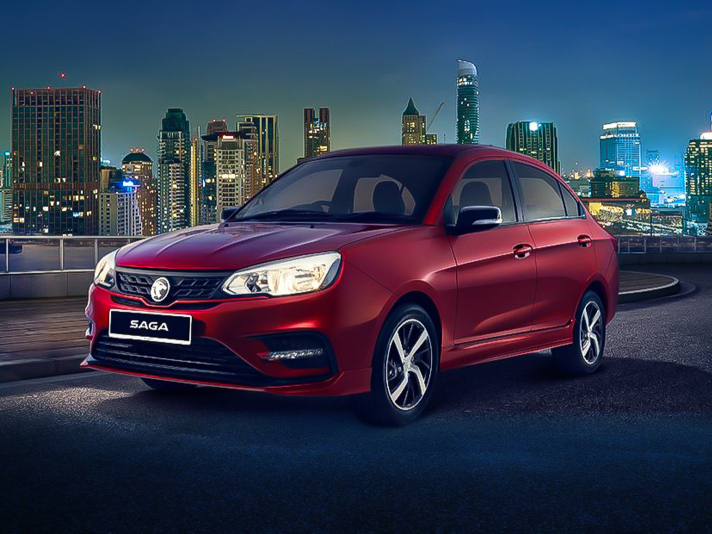
Proton Saga Interior Review: Affordable Yet Stylish for Everyday Use
WilliamJul 17, 2025
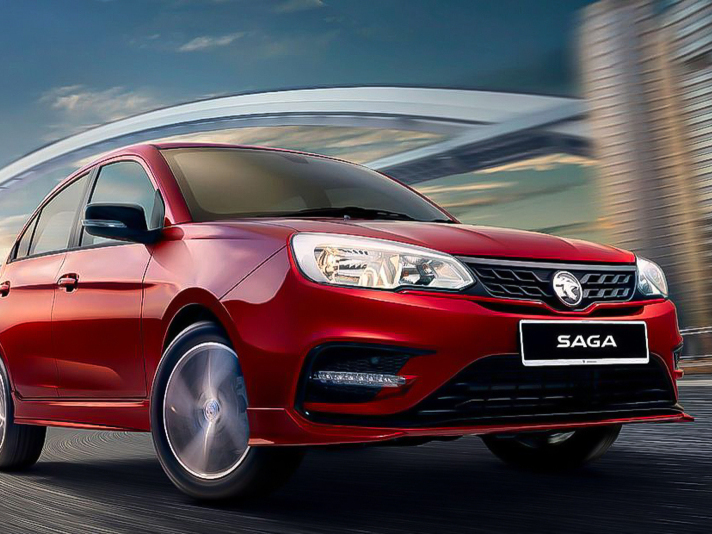
2025 Halfway Mark: All-New Proton Saga Coming Soon!
JohnMay 30, 2025
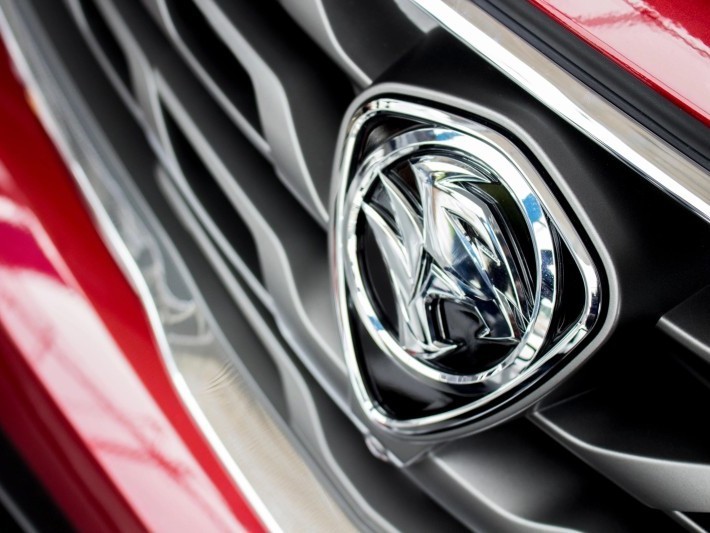
Proton Recorded Sales of 13,918 Vehicles in March, Marking a Significant MOM Increase of 23.9%
AshleyApr 10, 2025
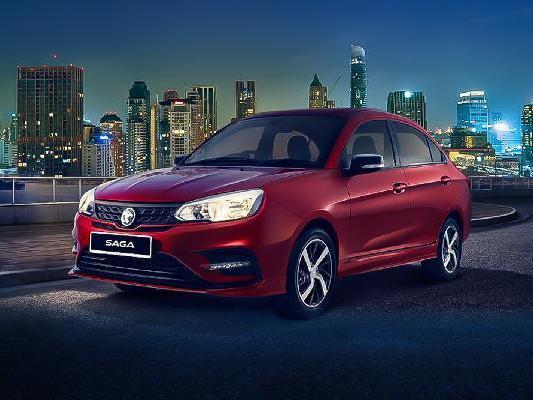
Proton Saga: A Clear Overview of Configurations and Costs of models
LienMar 25, 2025
View More












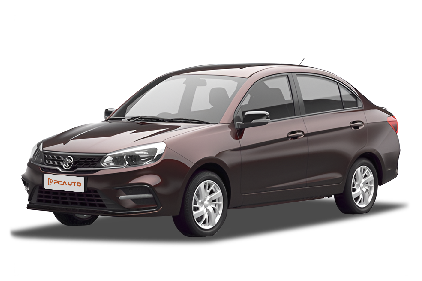





Pros
Cons